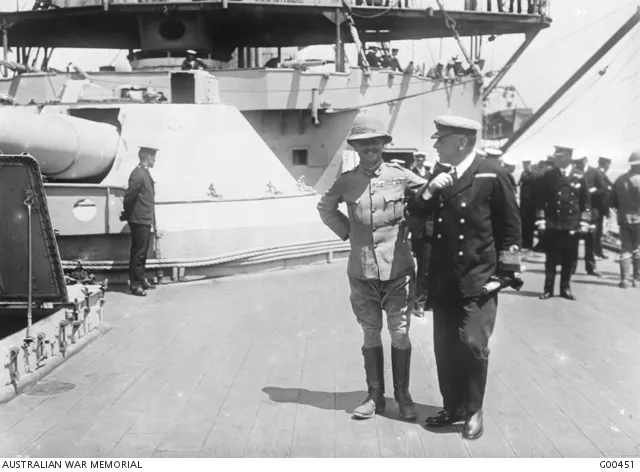William Birdwood
William Birdwood was born in India in 1865; his father was attached to the British Raj. He was educated at Clifton College, Bristol, and at the Royal Military College, Sandhurst. He was a highly experienced officer with the rank of major general before the outbreak of the Great War.
When war was declared and England’s dominions pledged their support, Lieutenant-General Birdwood was appointed operational commander of the Australian and New Zealand forces. From May 1915, he also became their administrative commander. He was one of the few British commanders that the Anzac soldiers held in high esteem. At Gallipoli, he apparently ‘impressed the men by regularly visiting the front lines and taking daily swims in the sea, heedless of the danger from Turkish shrapnel aimed at men seeking such refreshment’ (AWM).
Following the Gallipoli campaign, the Anzac Corps was divided into two; Birdwood was made commander of 1 Anzac Corps on the Western Front during 1916–17. He took control of the Australian Corps when, in November 1917, the five infantry divisions were reorganised. He was succeeded in this position by General John Monash, when, from May 1918, he became commander of the British 5th Army. He also retained administrative command of Australian forces.
After the war, the much-decorated military commander was made general and then field marshal of the Australian military forces. There was also talk of Birdwood becoming the governor-general of the Commonwealth of Australia, but the then prime minister insisted on an Australian holding the position.
William Birdwood retired from his military career with the Indian Army in 1930 and passed away two decades later, in England in 1951. He was buried with full military honours.
